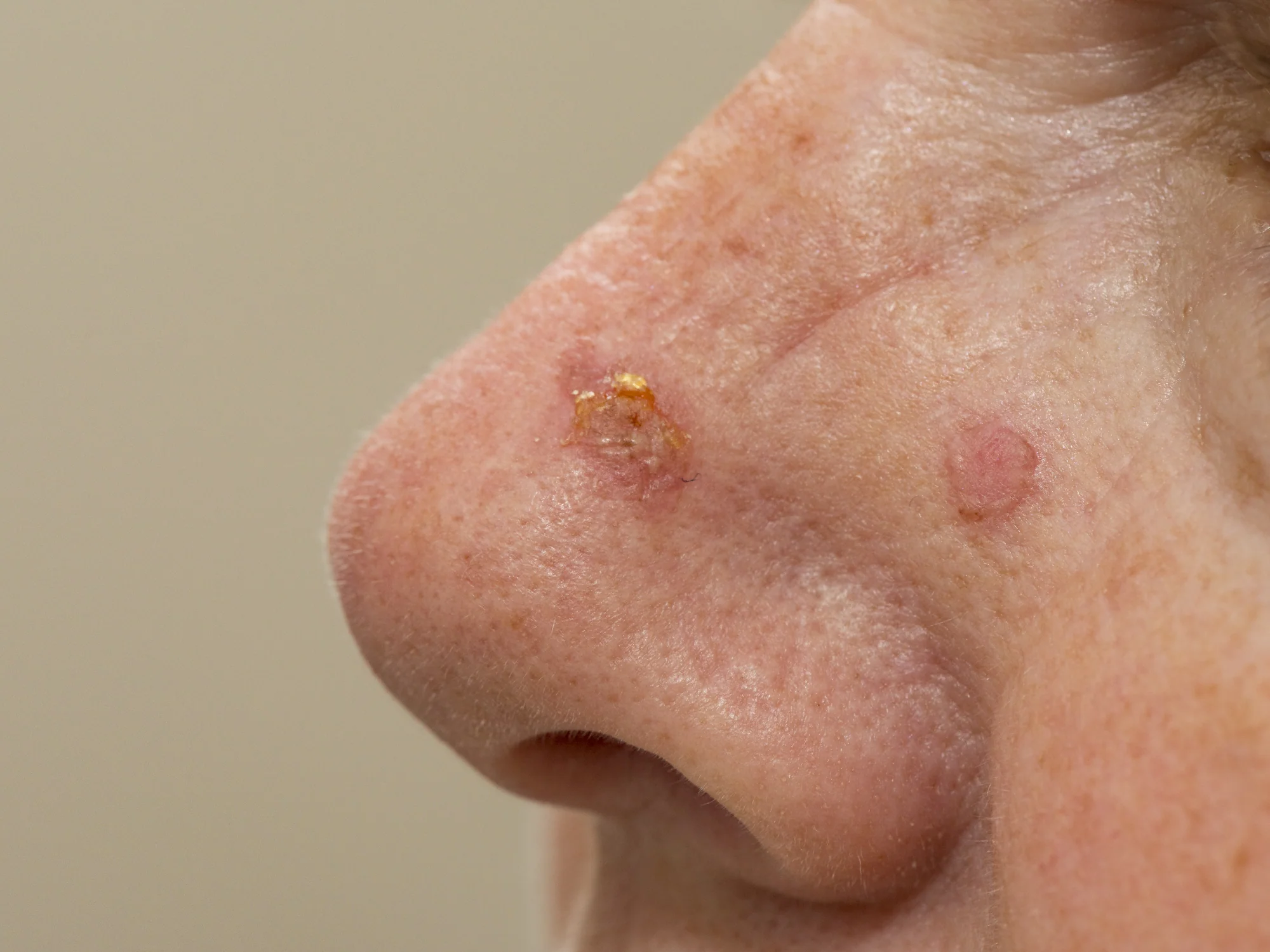Written by Dr. Ringpfeil

Actinic keratosis, a precancerous growth that develops in the epidermis, the outer layer of skin. The normal process of epidermal cell development is disrupted in actinic keratosis. Healthy new cells no longer push older cells toward the skin’s surface to shed and form a protective layer. These cells are damaged and undergo changes due to UV radiation, resulting in skin texture and color alterations, such as blotchiness or the formation of actinic keratoses and skin cancers. While actinic keratoses can develop in anyone, individuals with a history of intense or prolonged sun exposure, fair skin, or a weakened immune system are at an increased risk.
Actinic keratoses typically occur in sun-exposed areas and may manifest as single or multiple lesions. Signs and symptoms include rough or scaly, slightly raised bumps ranging in color from red to brown. The affected area may experience intermittent itching, burning, or tenderness. Actinic keratoses can be readily diagnosed through professional evaluation, although in rare cases, additional testing such as a skin biopsy may be necessary. A small sample of the lesion is collected and sent for microscopic analysis to confirm the diagnosis.
Some actinic keratoses have the potential to progress to squamous cell carcinoma, particularly in men, older individuals, those with multiple lesions, or those with weakened immune systems. Due to the uncertain rate of progression, treatment is preferred over observation. Most actinic keratoses can be effectively managed with local treatment alone.
The choice of therapy depends on factors like the location, number of lesions, and individual needs. In cases where common treatments are ineffective or if there are concerns about health, shallow excision may serve both diagnostic and curative purposes. For multiple or confluent actinic keratoses, or for sites with poor healing or unresponsiveness to standard therapies, photodynamic therapy, topical chemotherapy, or immunotherapy may be necessary. Long-term follow-up with a dermatologist is recommended due to the increased risk of non-melanoma skin cancer associated with actinic keratosis. It is also important to avoid further sun exposure in areas that have developed actinic keratosis.
As it is not possible to predict which actinic keratosis will progress to squamous cell skin cancer, treatment is essential. The appropriate treatment for individual lesions will be discussed by your doctor. Treatment options for actinic keratoses include cryosurgery (freezing), curettage (scraping), excision (surgical removal), chemical peel, creams containing anti-cancer medicines or immune system stimulants, photodynamic therapy, CO2 laser ablation, or dermabrasion. Each procedure has its advantages and disadvantages, such as discomfort, scarring risk, treatment duration, and the number of sessions required. Fortunately, actinic keratosis typically responds well to treatment.
Coping with actinic keratosis involves making recommended modifications to sun exposure during leisure activities or outdoor work, adjusting to changes in appearance, understanding the seriousness of the diagnosis, managing the disease, and dealing with feelings of illness. While implementing lifestyle changes is relatively straightforward, it requires discipline and constant awareness. In most cases, changes in appearance due to the original growths or their treatment do not require cover-up or scar revision treatments. Actinic keratoses can usually be easily removed through treatment, which alleviates concerns about their progression to skin cancer.
Actinic keratoses occur due to sun damage that is not adequately repaired by our immune system. In addition to limiting sun exposure, wearing sun-protective clothing such as wide-brimmed hats or tightly woven shirts.
Patients ask Dr. Ringpfeil answers
Please feel free to use this form to ask our dermatologists questions about this treatment.